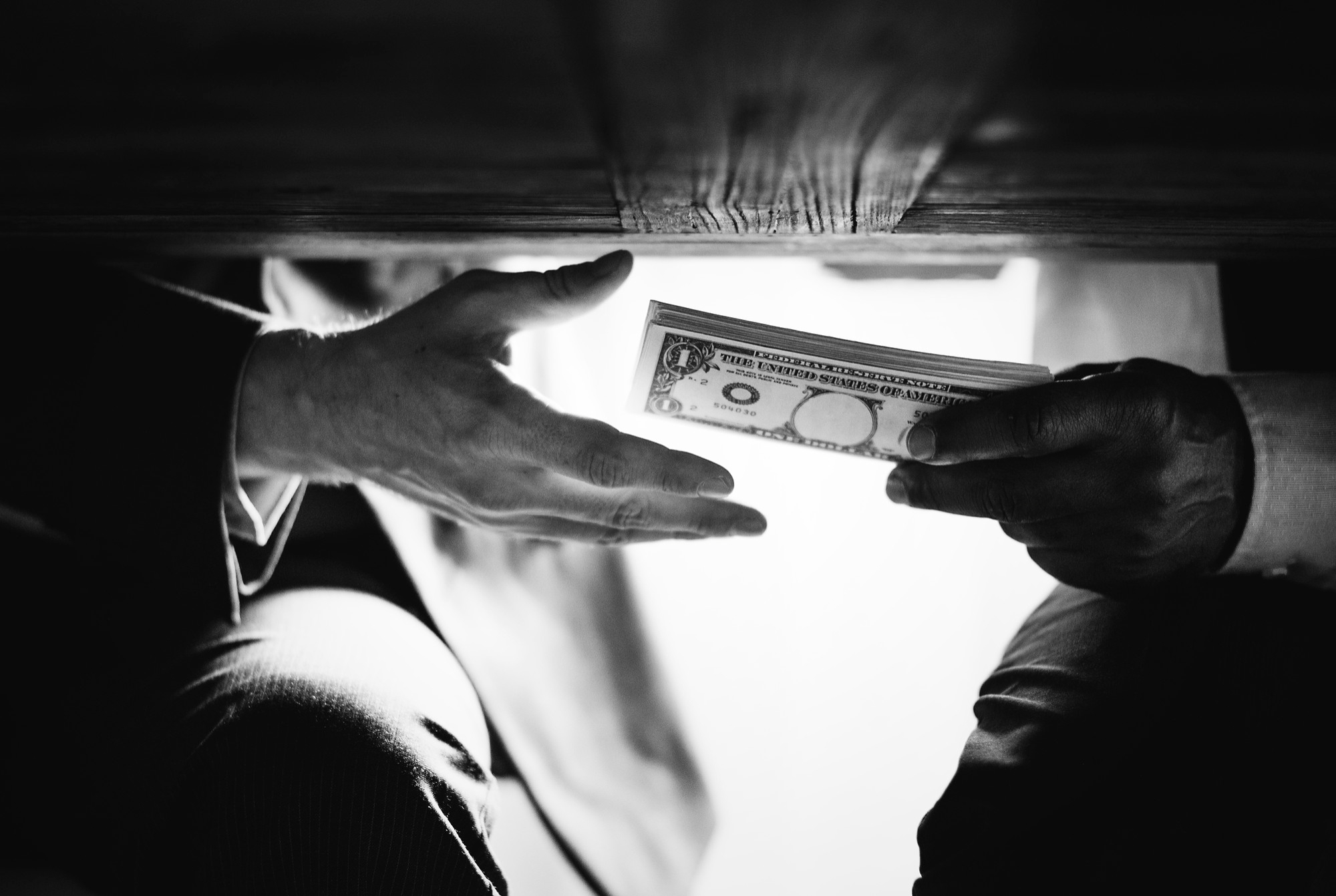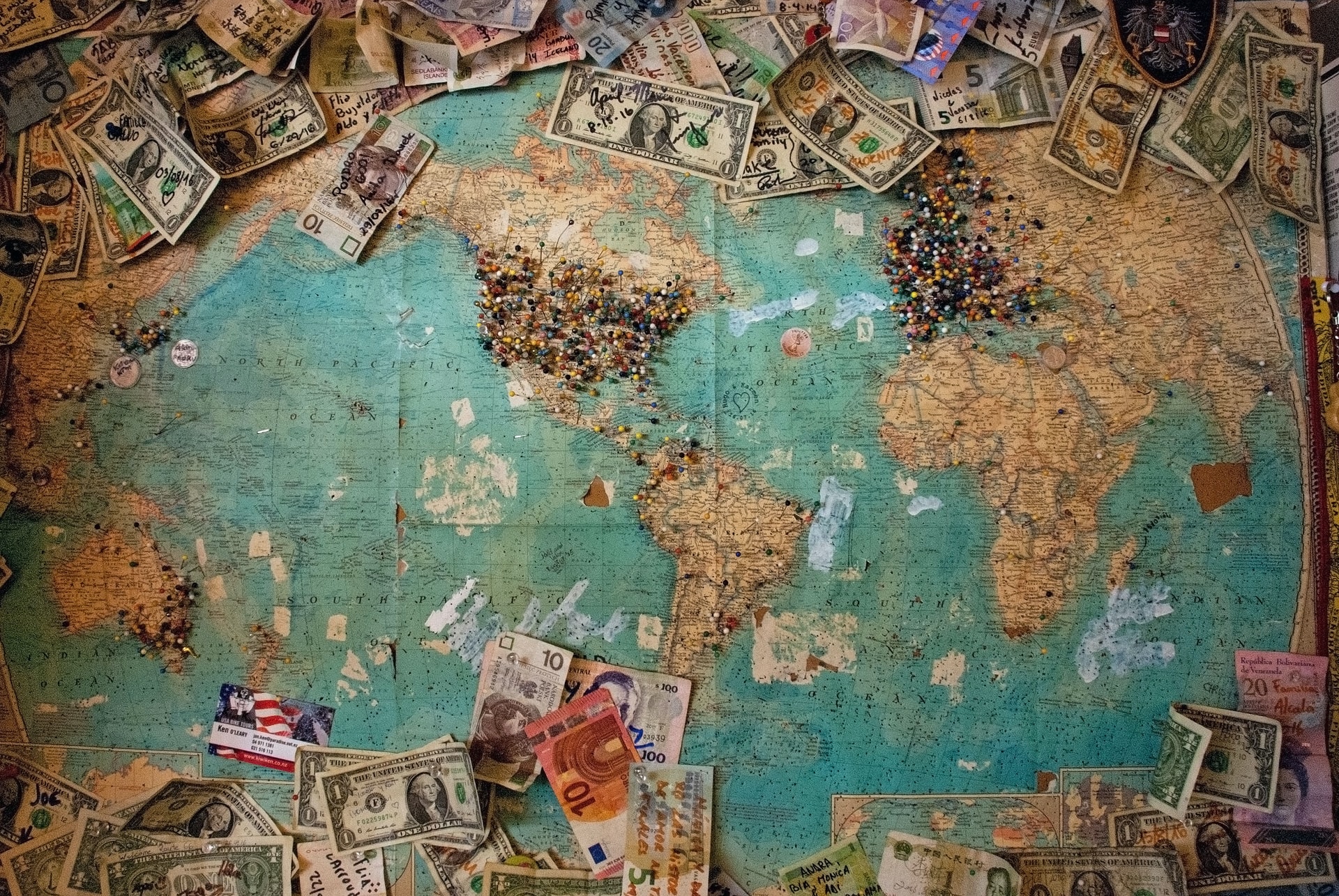Criminal behavior is traditionally symbolized as ignorant, uncivil, and unruly conduct, caused by unfortunate deprivation of education, mental ailment, socio-economic stratification due to inequality and poverty, or some unfortunate mishap in childhood (Anthony, n.d.; Sutherland, 1940; Braithwaite, 1985). Such a generalization naturally associates criminality with the lower class, but omits the consideration of criminal behavior prevalent in the upper class. This can have severe repercussions for a society, as such a theoretical model, that has its eyes only on the criminality in the blue-collar segment, may do away with the white-collar faction, where crimes and their effects can be more dangerous, drastic, and far-reaching.
Policies against crime in general are derived from the existing framework of thought and knowledge of policymakers and relevant officials. That is, crime is essentially combated in the manner in which it is grasped (Giddens, 2009). Therefore, if inclined towards the lower-class interpretation, the perception of criminality may result in forming policy designs that, even though challenge the “lesser” crimes, may do away with the more heinous and white-collar crimes. An important but highly complicated and unforthcoming aspect of white-collar crime is corporate crime, or simply “crime in relation to business” (Sutherland, 1940).
Crimes in business come on the same level, if not higher, as crimes in politics. Activities that come under the purview of corporate crime are numerous, which are not only restricted to a specific industry or locality. The nature and scope of these criminal activities transcend the corporate realm and step into the wider society to impact the everyday consumers, stakeholders, workers, public institutions, and governments. In today’s world, crime in business is rapidly going international due to transnational corporations’ complicity in organized and economic crimes. This creates further complexity in understanding, and hence confronting, the corporate criminals, as the laws and norms are different in countries worldwide.
The paper examines corporate criminal acts, their evolution in history, and their intensity and extensivity today in the so-called neo-liberal international economic order. In the discussion section, the paper further explores the nature of corporate criminality in the context of economics, politics, military, and transnational organizations. In a nutshell, this paper attempts to provide a glimpse of white-collar criminality that lies in the dark chambers of the corporate underworld.
Literature Review
The term white-collar crime was coined by the famous American criminologist Edwin Sutherland in 1939. Corporate crime, a type of white-collar crime, is defined as “part of a collective and organized effort to serve the economic interests of a corporation” (Levenson, 2016). It was Sutherland who introduced the concept of corporate criminality in the purview of sociology and criminology. There were accounts before him that attempted to develop a theory that not only incorporated “crime in the streets”, but also “crime in the suites” (Braithwaite, 1985). For example, Thorstein Veblen, Edward Ross, and Willem Bonger lambasted well-placed criminals for their self-centered wrongdoings (Brown et al., 2010, p. 441; Braithwaite, 1985).
Notably, the “muckrakers” provided journalistic accounts to expose leaders’ and corporations’ corruption in the early 20th century (Britannica, 2020; Huisman et al., 2015). Due to these writers’ and researchers’ efforts, numerous legislations were passed in the United States, which aimed to deter “corporate misconduct.” Given the rising corporate deviance cases, Sutherland’s job was to “turn muckraking into sociology” (Braithwaite, 1985). More precisely, he aimed to integrate the economists’ understanding of business with sociologists’ grasp of criminology, to comprehend white-collar criminality and develop an over-arching theory of criminal behavior (Sutherland, 1940).
Sutherland denied crime simply being caused by poverty, ignorance, mental deviance, or broken families (Sutherland, 1940). No doubt, deviance may arise because of the abovementioned factors, but are not the indicators of poverty, socio-economic inequality, lack of universality of education, healthcare deprivation, and similar problems a reflection of widespread injustice in the system, caused by the crimes of people in power? Crime in relation to business is as real a crime as any other, if not more, since “lower-class” crime may be committed out of necessity, but white-collar crime is not. Furthermore, the social ills that are termed the cause of many “everyday” crimes indicate and result from white-collar criminal activities at large. In Sutherland’s view, the traditional explanation of crime, which was only concerned with lower-class crimes, cannot explain criminal behavior in general.
Sutherland (1940) provided a hypothesis, building on his analysis, that applies to white-collar as well as lower-class criminality. There are two aspects to his hypothesis: differential association and social disorganization. The former is an individualistic or micro explanation of crime, whereas the latter discloses the societal or macro processes. The fundamental premise of his theory is that criminal behavior is learned, either by “direct or indirect association with those who already practice the behavior.” The process of learning, called differential association, occurs in a society that is “not organized solidly against that behavior.” Therefore, the societal arrangements set up a framework where individuals learn criminality. In the corporate sphere, the culture and norms structured and enforced for businesses and professional individuals “conflict with the legal rules.” Based on Sutherland’s theory, society as a whole is unable to provide a robust and organized resistance against deviant corporate practices, which results in the rise of white-collar criminality in businesses (Sutherland, 1940).
The pioneering work of Sutherland inspired many sociologists towards white-collar criminality. One of them was Marshall Clinard. He worked with Richard Quinney, another renowned criminologist and philosopher, and defined the two forms of white-collar crimes: occupational and corporate. The former is committed by professional individuals, especially against the hiring personnel, in their own interest. Corporate crime, however, is perpetrated on behalf of and in the interest of the corporation (Holtfreter, 2020).
Perhaps Clinard’s most notable contribution to the subject of corporate criminality is his study with the American sociologist, Peter Cleary Yeager. Together, they published Illegal Corporate Crime in 1979, described as “the first large-scale, comprehensive investigation of corporate crime” (Hagan, 2017). Clinard and Yeager examined the notorious practices of the largest 582 corporations in the United States in the manufacturing, wholesale, retail, and service industry. In only two years, 1,553 cases were filed against these corporations for federal offenses (Holtfreter, 2020). The conclusion of their study aligned with Sutherland’s contention: businesses committed crimes repeatedly. Given a large number of corporate crimes that are not even reported and go unnoticed, the authors reported their findings as only “the tip of the iceberg” (Holtfreter, 2020).
A business corporation is primarily a group of people that exists as a separate legal entity. It follows from the above that corporate crimes, done in the interests of the organizations, result from the actions of individuals within. That is to say, humans are essentially behind corporate misconduct – exhibiting behavior that constitutes of mens rea (guilty intent) and actus reus (guilty act). Culpable corporations, then, are nothing more than a legal instrument or apparatus that convicted criminals make use of to serve their interests.
Donald Cressey, a central figure in criminological studies who followed in the lines of Edwin Sutherland, pointed out the issue of assigning ‘intent’ with corporations, as these legal entities do not represent any psychological inclination (Akers & Matsueda, 1989; Brown et al., 2010, p. 446). On the other hand, John Braithwaite and Brent Fisse, authors of Corporations, Crime and Accountability, have argued that corporations have a “mind of their own” which is different from that of the individuals constituting it (Brown et al., 2010, p. 447). The attempt to separate the corporation from the individuals is not to acquit the people accountable, but to comprehend organizational crimes and create effective reform or retributive mechanisms against corporate criminality.
Prechel (2016) argues that the corporate-state interactions in the 20th century, on account of “corporate political mobilization and the exercise of class power” produced favorable “opportunities for corporate managers to engage in white-collar crime.” In the neo-liberal political economy, state and market structures are configured in such a manner that creates windows of opportunity for corporate crimes. Rawlinson (2002) contends that corporations under capitalist economies exploit the economic, political, and legal frameworks of countries, more so than organized criminal networks. This behavior of corporations is increasingly turning global, and the world is continually being “dominated by multi-nationals in which national borders can no longer protect and determine the interests of individuals or even societies” (Rawlinson, 2002). This essentially signifies the rise of transnational criminal activities, under the label of corporations.
Historically, states inspired by communism as well as capitalism demonstrate patterns of oppression and crimes.
Huisman et al. (2015) explore the historical context of corporate crimes to understand corporations’ role in transnational criminal activities. In a global context, the paper discussed the involvement and complicity of corporations in transnational organized crimes, which demonstrates “the blurrification of corporate and organized crime” (Huisman et al., 2015). Michalowski and Kramer (1987) also discussed corporate crimes in a transnational context, and how transnational corporations (TNCs) exploit the resources of developing nations by swaying their legal, economic and political structures.
Tombs (2005) brings to attention the insufficiency of research on corporate criminality due to lack of funding, blocking of publications, and the “corporate veil” – non-transparency of the corporate realm. “Gazing downward at the least powerful members of society,” the paper writes, “is easy compared to finding out what big business is up to” (Tombs, 2005). Moreover, Gregg (2016) highlights the conspicuous lack of laws relating to Multinational Corporate Crimes (MCCs) in capitalist states, especially in the financial sector. Therefore, there is a serious need and urgency for a more intensive and extensive inclusion of the study of corporate crimes in criminology, as these efforts will help reveal the dynamics of, and design policies against, the corporate underworld.

Passing money under the table as bribe, image by @rawpixel
Politico-Economic Systems & Crime
In Politics, Aristotle wrote, “The greatest crimes are caused by excess and not by necessity” (Braithwaite, 1985). Contrary to the traditional approach, which associates the causes of crime with poverty, ignorance, and psychological ailments, recent studies find that many crimes, especially under the white-collar label, are committed by educated people who are anything but poor and under no mental sickness. The idea of succumbing to basal human desires reinforced by excessive need or greed, then, arguably comes at the center of white-collar criminal behavior. It can be argued that greed, which internally drives business and professional men to resort to illegitimate means, is also systematically espoused by a culture that fosters the idea of excessive attainment.
This is in line with Marx’s contention against capitalism about how the capitalist system itself is inherently exploitative. Marxist theorists describe the world’s system according to the materialistic conception of life, reducing a society’s fundamental base to production, transaction, and economics. Moreover, these theorists propose, loosely speaking, the overturning of the world system from capitalism to a communist or people’s society. Communism, it is argued, will “eliminate or greatly reduce crime” – particularly by encouraging altruism in place of egoism (Cowling, 2008).
Though promising a peaceful and equal world on paper, Marxism has largely failed to provide such a world in practice. Movements inspired by this approach have exhibited large-scale crime and oppression. The history manifests that the “reformist” systems, inspired by Marxist ideology, were no less exploitative and crime-driven than their contemporary capitalists’ regions. The widescale oppression against common people under the reigns of Lenin, Stalin and Zedong, in the Soviet Union and past- China, holds testimony to the horrors of the so-called socialist/communist regimes. Around 100 million people were killed by the communist states in the last century (Somin, 2017).
Efforts are made to divorce historical oppression from the original idea of Marxism, so as to rid the association of the collapse of communism in many parts of the world with Karl Marx. Marx himself has provided only a terse account of communism. It would start by raising the poor class to the ruling class, whereby the state would become socialist and be ready to move to higher stages of communism. Who is to stop, one can ask, the ruling class members to succumb to the egoistic desire for wealth and power, once they are placed in office? Research shows that organizations, whether in a capitalist or socialist set-up, face the burden to submit to “illegitimate means of goal attainment when legitimate means are blocked” (Braithwaite, 1985).
Robert Neild, in his exceptional paper Economics in Disgrace: The Need for a Reformation, writes: “Liberal Optimism and Marxism, those two value-loaded doctrines with their wholly unjustifiable promises of heaven on earth, in one case brought about by the pursuit of self-interest… in the other by revolutionary violence, are in disrepute” (Neild, 2013).
The debate for communism and capitalism is unresolved and may remain so in the foreseeable future. The Marxist critique, however, does expose the tendency of criminality at the heart of capitalism. Just as the critiques of “communist horrors” are commonplace, and that for a good reason, it is high time to identify the ruthless side of capitalism. The purpose of the foregoing account is to set the context for the discussion that follows and to divorce this paper from any specific politico-economic doctrine. The presented content is mainly academic, exploring the concept of corporate criminality from a criminological perspective.
The perverse activities of crooked organizations, no less harmful and despotic than those committed by their brethren politicians, form the idea of corporation as crime.
White-Collar Crimes in the Market and Beyond
The “crimes” in the corporate underworld go beyond the scope of white-collar deviance that are generally listed out. Crimes in businesses typically include, but are not limited to, misrepresentation of assets and financial records, bribery, profiteering, embezzlement, money laundering, tax frauds, insider trading, healthcare frauds, conspiracy, perjury and obstruction of justice, collusion, misinformation regarding products, extortion, corporate espionage, environmental crimes, child labor, manipulation of stakeholders, phony advertising, and cybercrime (Levenson, 2016; Hagan, 2017; Sutherland, 1940).
No doubt, organized crimes carried out by corporations inflict vast social and economic costs on the society at large. However, the very nature of large corporations – their modus operandi – and their actions behind the curtains indicate massive abuse of power beyond the recognition of law. Mafia networks and corruption, racketeering, rent-seeking, and political lobbying give just an indication to the massive networks of trickery, deceit, and abuse of position and power that corporations commit. Large corporations influence, by and large, legal and state institutions to capture and enlarge their market share.
Rawlinson (2002) argues that “corporate activities, whether through transgressions or legal acts, are more inimical to society than organized crime.” The perverse activities of crooked organizations, no less harmful and despotic than those committed by their brethren politicians, form the idea of corporation as crime. “There is less graft in politics than in business,” said Anton Cermak, a politician and mayor of Chicago in the early 20th century. “The average politician is the merest amateur in the gentle art of graft, compared with his brother in the field of business,” wrote John Flynn (Sutherland, 1940).
Legal corporations can sometimes provide a safe haven to organized criminal networks. This gives, one can say, a “legal” shape to criminal networks. Costa Nostra in America, Yakuza in Japan, and the Russian mafia, for example, had “some level of control over or operate as legitimate corporations” (Huisman et al., 2015). Money laundering is a popular convention of criminal networks. Not surprisingly, corporations are a vital ingredient in the process of money laundering. Money laundering is defined as the “process by which criminals attempt to conceal the illicit origin and ownership of the proceeds… from their crimes into funds of an apparently legal origin” (Adamoli, 2020). What better legal origin or apparatus is there than a business corporation? Existing as a separate legal entity, a corporation becomes a “laundry” for criminals to seemingly legitimize and wash their black and dirty money.
It is noteworthy, corporations (or individuals behind them) are not unbeknownst to the process, left at the mercy of dangerous criminals. Corporations and business people are themselves at the crux of the entire process, operating as ringleaders behind money laundering operations. The affiliations of corporate individuals with government officials, politicians, and powerful people ease the process. Muhammad Nawaz Sharif and his family, who were the caretakers of Pakistan’s traditional business community, are charged “with corruption charges of billions rupees” (Ilyas, 2018). The corrupt exploits during Sharif’s tenures in Pakistan until recently give a classic example of how the businessman can creep into political and state affairs. Imelda Marcos, who remained the First Lady of Philippines for around 20 years, hid her graft, embezzlement, and corruption behind her flamboyant and flashy figure as a politician (Ray, 2020).
Rawlinson (2002) argues, fairly aggressively, the “sickness” in corporate businesses and how markets and corporations intrude into almost every sphere of our lives under global capitalism. The impact of multinational corporations, and their association with organized crime, cannot entirely be divorced from the self-serving doctrine of crony capitalism that hovers most of the world. The existing capitalist mode of production and consumption arguably carries the germs of white-collar criminality, which reaches its climax in large corporations. As Rawlinson wrote:
Economic strength is directly proportional to political power. By the same token, countries with superior economic power hold greater political leverage in international affairs.
“The capitalist ethos broadens the possibilities not just for organized crime but, in an increasingly ruthless market, encourages legal business to adopt expedient and dubious alliances and contentious behaviours in the preservation of its status and the maintenance of profit…. None of this is to condone or downplay the misery caused by the activities of organized crime… [But to convey] an idea of actual rather than imagined harm done by organized crime and set this within the broader framework of the tangible damage done and opportunities created (for organized crime) by legitimate business.” (Rawlinson, 2002)

Bills hanging on clothes’ pins as if after laundry, image by @BillionPhotos
Activities ranging from loansharking, bribery, and money-laundering to conspiracies, corruption, and rent-seeking indicate just the tip of the iceberg of the corporate underworld. The black and clandestine activities of large corporations, in cooperation with governments, intelligence networks, militaries or organized criminal networks, do not even get captured on the radar, thanks to the massively capitalized state-corporate interactions.
Prechel (2016) argues that the corporate-state interactions in the 20th century, which were founded on the neo-liberal economic order, structured state and market interactions “in ways that created opportunities for managers to engage in financial malfeasance, chicanery, and crime.” Huisman et al. (2015) show that organized crime networks in Russia “acquired control over many sectors of the economy after the introduction of the free market economy.”
Similarly, Rawlinson (2002) argues that the opportunities for organized crime escalated in Eastern Europe and Russia not only because of the oppressive regimes at the time of communism, but also due to the injection of capitalism given to these states afterward: “Although the blame for much of this must lie with the incompetent and corrupt legacy of communism, the capitalist medicine has undoubtedly made the patient more sick” (Rawlinson, 2002).
Economics of Corporate Crime
It is well recognized that the classical economic theory based on the “rational man” is an understatement – even incorrect – provided that people make irrational choices as well (Neild, 2013). The very subject matter of behavioral economics, for instance, focuses on the irrationality of human beings. However, the behavior of many corporations gives some credence to the mainstream economic theory, especially in the case of firms.
The basis of production theory in economics is that “rational” firms act to maximize their profits. Large corporations, it can be seen, will always strive to maximize their profits, which becomes a problem when their behavior transgresses or bends the dictates of the law or basic ethical values. Corporate criminality, in this sense, becomes as much a concern in the study of economics as it is in sociology and criminology. It appears apt to mention the words of Sutherland here: “The economists are well acquainted with business methods but not accustomed to consider them from the point of view of crime; many sociologists are well acquainted with crime but not accustomed to consider it as expressed in business” (Sutherland, 1940).
The motivation for corporate criminality, by and large, comes in line with the motivation of a “rational firm”: profit-maximization. It is argued that when the market is left untouched, capitalists and large businesses get the opportunity to manipulate the market mechanisms in their own favor. Economic theories on oligopolies, monopolies, and cartels, for instance, reflect how big players can manipulate market outcomes to increase their profit. By pulling a few strings here and a few there, the businessman can charm, gratify and even coerce “bureaucrats and politicians in their malpractices” (Ilyas, 2018).
Incumbent players (firms already existing in the market) attempt to maintain or enlarge their market share and encumber entrance by resorting to rent-seeking, lobbying, and public relations. From an economic point of view, these efforts represent pure loss of social and economic welfare, as no valuable output is produced through them. Lobbying and rent-seeking expenditures, for accurate economic analysis, “should be counted as part of the cost of the system” (Varian, 2014). Collusion and abuse of power by large corporations and mafias produce direct and indirect social harm for the whole of the society, depriving it of its realizable economic potential. Indeed, corruption and corporate crimes cause “economic underdevelopment” (Ilyas, 2018)
The pattern of corporate criminality is observed in corporations across different timelines. In the 17th century, trading companies like the British East India Company and Vereenigde Oost-Indische Compagnie (VOC) aimed to extract and exploit resources from different territories. Ironically, these companies are described as the “first transnational corporations” (Huisman et al., 2015). In the 20th century, during World War 2, many large corporations on both sides were involved in “war profiteering” through collusion, thereby generating windfall profits on account of war conditions (Huisman et al., 2015).
Criminal behavior of the elite groups gives rise to an atmosphere of poverty and injustice in socio-economic spheres, bringing about criminal activities in the lower-class.
A case-study into five American companies – Ford, Motor Company, General Motors, IBM, Kodak, and Chase-Manhattan – found these corporations’ involvement in “Nazi crimes” such as genocide, slave labor, and “crimes against humanity.” Similarly, multinational corporations aided and abetted the Apartheid regime in South Africa that gave way for racial segregation and oppression in the second half of the 20th century (Huisman et al., 2015). The list goes on, and with it the criminal behavior of wealthy elites and large corporations.
Economics and politics cannot be isolated from each other. The subject matter of political economy, for instance, explores the impact of one on the other, and how both of them are inextricably intertwined. In view of this paper, profits or the economic dimensions are more central, pivotal, and decisive than power or political aspects. This is especially and visibly true for countries with capitalist structures of free-market mechanisms operating in the backend. It can arguably be said that “profit is directly proportional to power” (Saddiqa, 2007). Equivalently, economic strength corresponds pro rata with political power. For instance, developed countries with superior economic power hold greater political leverage in international affairs. Similarly, large businesses can develop, owing to the market-state infrastructures, the authority to lobby into legal and political matters, in their corporations’ interests.
This also applies to military’s praetorianism, as elaborated in Military Inc. by a Pakistani political scientist, Ayesha Saddiqa. The military, a crucial institution of a country, can involve itself in profit-making activities to expand its political influence. Saddiqa pinpoints the route to political power via corporate corridor as follows:
State-market interactions reveal the influence of corporations on legislation and state institutions due to rent-seeking, lobbying, and other interferences.
“Milbus [military business] is military capital that perpetuates the military’s political predatory style…. Military capital also becomes the major driver for the armed forces’ stakes in political control. The direct or indirect involvement of the armed forces in making a profit… increases the military’s institutional interest in controlling the policymaking process and distribution of resources…. Milbus is both a source and beneficiary of crony capitalism.” (Saddiqa, 2007, pp. 2-15)
Transnational Corporate Crime
Gregg (2016) explores the continued and conspicuous absence of Multinational Corporate Crimes (MCCs) in capitalist states’ legal structure, especially in the domains of security investments, interbank interest rates, tax evasion, and exploitation of labor. Such conditions of “criminal impunity” in the social and legal justice system fuel the “normalization or routinization” of many corporate crimes. The author earnestly calls for the inclusion of Multinational Corporate Crimes in the study of criminology, whereby theoretical explanations and policy prescriptions against corporate offenses can be developed.
Michalowski and Kramer (1987) have discussed corporate crimes in a transnational context, and how transnational corporations (TNCs), by expanding their operations to the developing countries, engage in various economic and political activities that are particularly injurious to the social and legal environment of the host countries. Given the lack of “legal controls” in developing states, contrasted with the established or comparatively stricter legal climate of developed nations, TNCs find it in their interests to shift their operations to the Third World countries to carry out practices that would otherwise be either costly or illegal in their home countries. The paper elucidated the transnational corporate deviances in the domains of working conditions, environmental pollution, and consumer safety. There is a significant difference in the wages, health conditions, and employment practices of TNCs in developing countries as compared to the operations of TNCs in developed nations.
For example, many corporations involved in toxic substances evaded their home countries’ legal boundaries by setting foot in developing countries with less or no institutions placed for such purposes. TNCs even found a way to transport the waste products produced in their home countries to the Third World in an attempt to liberate themselves from the scrutiny of hazardous waste disposal regulations. Similarly, research shows that hundreds of thousands of people in developing nations had been poisoned, by the 1980s, due to the “misuse of industrial and agricultural chemicals exported from developed nations” (Michalowski & Kramer, 1987).
The intention here is not to deplore all corporations, but to identify the criminal behaviors within the corporate realm, which has recently grown transnational, on account of rapid globalization and contemporaneous evolution of the international economic order. In fact, this debate becomes one of the primary arguments of how the deviant practices of corporations, though harmful in general, are atrocious for developing countries in particular.
Michalowski and Kramer (1987) argue that transnational corporations can impact the “regulatory climates” of developing countries by influencing or altering their economic and political position, either directly or indirectly. The host countries, especially under free-market conditions, welcome foreign investment in business activities. This paper agrees with the prospects of entrepreneurship and competitive business activity, which result in employment generation, progression and innovation, and improvement in general living standards in the long run. The purpose of this paper is not to undermine the potential of businesses, but to recognize the transgressions committed by corporations and individuals behind them. As Neild (2013) illustrates:
“It is not that markets are bad. On the contrary, they are a wonderfully effective mechanism for inducing enterprising persons to produce things that consumers want to buy and for coordinating the network of production and distribution through which the wanted products must pass to reach consumers… The problem is that competitive endeavour can run wild if it is not prudently constrained and policed by government.” (Neild, 2013)
Foreign investments should not, at least in principle and purpose, replace the notion of domestic sovereignty and economic self-sufficiency.

World map with money all over the place, implying internationalization of economic orders. Image by Christine Roy
In terms of economics, foreign direct investment and the accompanying competitive culture can be fruitful for domestic industries. However, the TNCs can deeply influence the political and legal sway of host countries for their benefit. In such cases, foreign investment can pressurize – even threaten – domestic policy, legislation, and civil or political movements. For example, Control Data Corporation, one of the major computer companies of the United States, closed their production unit in Korea as a bold “response to attempts by workers to unionize” (Michalowski & Kramer, 1987).
The exploitation of developing nations’ political and legal climate by transnational corporations dissuades domestic institutions’ progression. In this view, this paper argues that foreign influence and investments should not, at least in principle and purpose, replace the notion of domestic sovereignty and economic self- sufficiency. Why should the transgressing TNCs be permitted to adopt practices in developing countries, which they would otherwise be charged with if they did so in their home countries? It is past due time to develop and enforce political, economic, and social responsibility in the corporate realm.
Conclusion
For decades and centuries, from ‘robber barons’ in the 19th century to today’s transnational corporations, white-collar crime is seen to pervade the corporate realm. The implications of corporate criminality go beyond the market dynamics and damage the social and political fabric of economies worldwide. Are corporate criminals just a few “bad apples” who are unfortunately placed in office and misuse their power or is there something wrong with the system itself?
A critical inquiry into the corporate world provided in the paper reveals the existence of white-collar criminality in the market structures, political bodies, military institutions, and transnational organizations. The paper does not deplore the market mechanisms of the world’s economic order, neither does it propose abandonment of free and competitive business activity, which might gravely impact the patterns of entrepreneurship and innovation. Instead, it attempts to suggest greater inspection into the corporate underworld, where crimes are committed extensively, ruthlessly, and without serious scrutiny.
The role of criminology in policymaking cannot be understated in this respect. As Giddens (2009) pointed out, “The way in which crime is understood directly affects the policies developed to combat it.” Traditionally, criminological inquiry emphasized lower-class deviances, associating crime with mass poverty, lack of education, mental illnesses, and domestic conditions. Where the contribution of these factors to lower-class criminality is crucial, white-collar criminality does not necessarily correlate with them. Moreover, the criminal behavior of the elite groups gives rise to an atmosphere of poverty and injustice in socio-economic spheres, bringing about criminal activities in the lower-class.
Tombs (2005) sheds light on the lack of research done in the field of corporate criminality, despite the fact that the social and economic impacts of these crimes are generally more massive than the crimes among common masses. Such a cursory inspection directly impacts the policy structures of the country in the domain of corporate criminality. Just as the exposés of 20th-century “muckrakers” brought about numerous legislations to deter corporate misconduct, so will the criminological investigation into corporate criminality bring to bear on policymaking.
It is past due time that the world robustly challenges the corporate underworld, and the first step lies in thoroughly understanding what that is.
References
Adamoli, S. (2020). Money laundering. Encyclopedia Britannica.
Akers, R.L. and Matsueda, R.L. (1989). Donald R. Cressey: An Intellectual Portrait of a Criminologist. Sociological Inquiry, 59, 423-438.
Anthony, H. (n.d.). The cause of crime. University of Huwai Hilo.
Braithwaite, J. (1985). White Collar Crime. Annual Review of Sociology, 11, 1-25.
Britannica, T. Editors of Encyclopaedia (2020). Muckraker. Encyclopedia Britannica.
Brown, E. S., Esbensen, F., & Geis, G. (2010). Criminology: Explaining crime and its context (7th ed.). New Jersey: Anderson Publishing.
Cowling M. (2008). Communism – The End of Crime?. Marxism and Criminological Theory. London: Palgrave Macmillan.
Giddens, A. (2009). Crime and deviance. In W. S. Philip, & A. Giddens (Ed.), Sociology (6th ed., pp. 935-983). Cambridge: Polity Press.
Barak, G. (2016). Multinational corporate crime: An undeveloped area of criminological inquiry. Social Crimonol, 4(2).
Hagan, F. E. (2017). Corporate crime. Encyclopedia Britannica.
Holtfreter, K. (2020). Marshall B. Clinard. Encyclopedia Britannica.
Huisman W., van Baar A., Gorsira M. (2015). Corporations and Transnational Crime. In: Bruinsma, G. (Ed.) Histories of Transnational Crime, pp. 147-170.
Ilyas, U. (2018). Unfolding white collar criminal instinct: A case study about white collar criminal from Pakistan. Journal of Psychology & Psychotherapy, 8(4).
Levenson, L. L. (2016). White-collar crime. Encyclopedia Britannica.
Michalowski, R. & Kramer, R. (1987). The Space between Laws: The Problem of Corporate Crime in a Transnational Context. Social Problems, 34(1), 34-53.
Neild, R. (2013). Economics in disgrace: The need for a reformation (Paper No. 01-13). Graduate Institute of Development Studies.
Prechel, H. (2016). Organizational political economy and white-collar crime. In Shanna, S., Michael, B., & Francis, C. (Eds.) The Oxford Handbook of White-Collar Crime, pp. 294-325. Oxford University Press.
Rawlinson, P. (2002). Capitalists, criminals and oligarchs – Sutherland and the new ‘robber barons’. In Crime, Law and Social Change 37, 293–307.
Ray, M. (2020, June 28). Imelda Marcos. Encyclopedia Britannica.
Siddiqa, A. (2007). Military Inc: Inside Pakistan’s military economy. London: Pluto Press.
Somin, I. (2017). Lessons from a century of communism. The Washington Post.
Sutherland, E. (1940). White-Collar Criminality. American Sociological Review, 5(1), 1-12.
Tombs, S. (2005). From the streets to the suites: researching corporate crime. Criminal Justice Matters, 62(1), 24-45.
Varian, H. (2014). Intermediate microeconomics: A modern approach. New York: W.W. Norton & Company.






